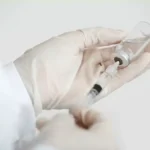

The loss of bladder control is a common condition, especially in women. This condition, which is also known as urinary incontinence or bladder leakage, can be caused by muscular factorssuch as the weakening of the pelvic wall, a condition commonly seen after childbirthor by neurological factors due to the uncontrolled contractions or spasm of the bladder wall. Botulinum toxin products, especially Botox, have been used in the treatment of incontinence caused by muscle hyperactivity for over a decade. In the United States, the FDA has granted approval for Botox to treat two types of bladder dysfunction: an overactive bladder, and detrusor overactivity associated with a neurologic condition.This article will delve deeper into the use of Botox for treating urinary incontinence in part by focusing how Botox works and how to administer the drug.
What is botulinum toxin and how does it treat urinary incontinence?
Botulinum toxin treatments are best known as a type of cosmetic injection. For aesthetic indications like the treatment of dynamic facial wrinkles, toxins like Botox treat these wrinkles in order to counteract the effects of aging. However, that is not all that botulinum toxins can do. Botox is a highly versatile injectable, and this is due in part to its ability to relax treated muscles and prevent them from contracting. This mechanism of action makes Botox very useful in the treatment of movement and neuromuscular disorders; certain pain-associated disorders, such as chronic migraines; and certain bladder dysfunctions.
When treating an overactive bladder or detrusor overactivity associated with a neurologic condition, Botox is injected into the detrusor, the muscle in the bladder wall, to prevent hyperactivity.
Which patients are not good candidates for Botox treatment?
Patients that have an existing medical condition that may impede on neuromuscular function-such as myasthenia gravis, Eaton-Lambert syndrome, or amyotrophic lateral sclerosis-should not receive Botox treatment. Additionally, female patients who are expecting or nursing should be excluded from treatment. Finally, patients who currently have a urinary tract infection (UTI) or are not able to empty their bladder on their own (and are not routinely catheterizing) should not receive Botox injections for their bladder dysfunction.
Administration of Botox: professionals
For these purposes, Botox is administered to the detrusor muscle via cystoscopy. Botox is supplied in the form of a white lyophilized powder that will have to be reconstituted prior to use. To reconstitute Botox, the following steps are recommended:
• The diluent of choice is sterile, preservative-free 0.9% sodium chloride Injection, USP.
• Determine the appropriate dose. For an overactive bladder, the recommended dilution is 100 units/10ml; for detrusor overactivity associated with a neurologic condition, the recommended dilution is 200 units/30 ml. Draw up the suitable amount of diluent in an appropriately-sized syringe, and slowly dispense the diluent into the vial by injection. Gently mix by rotating the vial.
• Store the reconstituted solution in a refrigerator (2-8°C). Administer the solution within 24 hours after reconstitution.
The following are considerations and precautions of treating bladder dysfunction with Botox injections:
• Prior to treatment, start the patient on a course of prophylactic antibiotics that excludes aminoglycosides three days before treatment and extends this course to one to three days post-treatment. This is to minimize the risk of contracting a urinary tract infection.
• If the patient is receiving anti-platelet therapy, they should stop taking the medication at least three days before the injection procedure. These patients should be managed with caution to prevent excessive bleeding.
• Choice of anesthesia comprises either the intravesical instillation of diluted local anaesthetic with or without sedation, or general anaesthesia. If a local anesthetic instillation is used, the bladder should be drained and irrigated with saline before injection.
• Prior to the cystoscopy procedure, instil the bladder with saline with an amount sufficient for visualization but not enough to cause overdistension.
• Prime the needle with 1ml of reconstituted Botox before the start of injections to remove any air.
To administer Botox for the treatment of an overactive bladder, do the following:
• Inject reconstituted Botox solution into the detrusor muscle in 20 injections of 0.5ml each for a total volume of 10ml. Injection should be achieved via a rigid or flexible cystoscope. Be sure to avoid the trigone when injecting.
• The needle should be injected about 2mm into the detrusor.
• Once the procedure is complete, the patient should be observed for 30 minutes and should be released only once they have demonstrated their ability to adequately discharge urine.
To administer Botox for the treatment of detrusor overactivity associated with a neurologic condition, do the following:
• Inject reconstituted Botox solution into the detrusor muscle while avoiding the trigone. The injection regimen entails a total of 30 injections of 1ml each for a total volume of 30ml. Injection should be achieved via a rigid or flexible cystoscope.
• The needle should be inserted approximately 2mm into the detrusor.
• Upon completion of the procedure, drain the bladder of the saline used for visualization. The patient should be then observed for half an hour.
What are the complications that can potentially develop as a result of Botox treatment?
After treatment, Botox will start to take effect after about two weeks, and patients should plan for repeat treatments about every six months but no sooner than three months from the preceding treatment. The side effects associated with Botox treatment for overactive bladder are mild and minimal. They can include dysuria (pain during urination), urinary tract infection, and temporary urinary retention (inability to empty the bladder spontaneously).
Conclusion
Botox has a wide variety of therapeutic indications, including the management of symptoms of certain types of bladder dysfunction. If you think you could benefit from Botox for incontinence, talk to your doctor about treatment options.
Aesthetic products generally refer to a broad category of items designed to enhance or improve one's appearance, often focusing on skincare, beauty, and personal grooming. These products are typically used to maintain or enhance physical attractiveness and may include a wide range of items intended for both professional and personal use. Here are some common types of aesthetic products:
-
Skincare Products: Including cleansers, moisturizers, serums, and treatments designed to address various skin concerns such as acne, aging, hyperpigmentation, and sensitivity.
-
Cosmetics: Makeup products such as foundations, concealers, eyeliners, lipsticks, and eyeshadows used to enhance facial features and achieve desired looks.
-
Hair Care Products: Shampoos, conditioners, styling products, and treatments to maintain and improve the health and appearance of hair.
-
Fragrances: Perfumes and colognes used to enhance personal scent and attractiveness.
-
Dental Care Products: Toothpaste, mouthwash, whitening treatments, and dental floss aimed at maintaining oral hygiene and enhancing smile aesthetics.
-
Personal Grooming Tools: Including razors, electric shavers, trimmers, and grooming kits used for hair removal and personal hygiene.
-
Beauty Devices: Devices such as facial cleansing brushes, LED light therapy masks, and microcurrent devices designed for at-home skincare treatments.
-
Nutritional Supplements: Supplements aimed at promoting skin health, hair growth, and overall well-being, often containing vitamins, minerals, and antioxidants.




